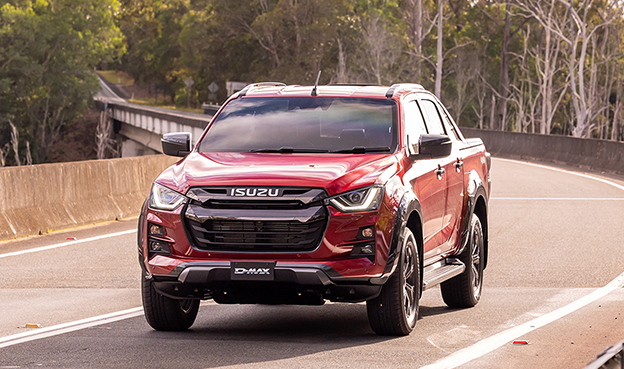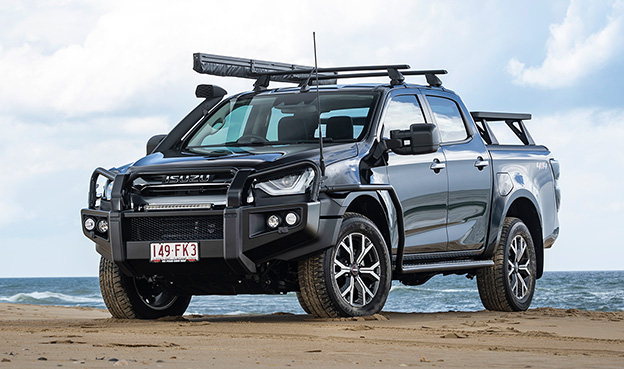

Pop quiz: what’s the greatest sandy desert? (Hint: it’s not the Great Sandy Desert.) Now’s the time to head Outback …
The Simpson Desert, the world’s largest sand dune desert, is at the top of many an Aussie four-wheel driver’s must-do list. The red giant covers more than 17 million hectares of central Oz and incorporates Munga-Thirri National Park (Queensland), Simpson Desert Conservation Park (South Australia) and the Northern Territory’s Simpson Desert Regional Reserve. Across the Simpson, over 1100 parallel dunes run south-east to north-west—some up to 90m high; some 200km long. They’re separated by intra-dunal valleys, each about 1km wide. Though it’s a desert, the Simpson does support vegetation: spinifex, canegrass and shrublands of acacias, hakeas and grevilleas. It’s relentless: hot, hard, harsh. It’s a graveyard for the unwary and an invitation to the unhinged, but it’s also one of the world’s most beautiful places.
When to go
Unless you are absolutely mad, avoid travelling through the Simpson Desert in the hotter months. From November to April, the mercury regularly tops 40°C and can exceed 50°C. Queensland’s Munga-Thirri National Park is closed over summer, from 1 December to 15 March. This is sensible. The Simpson’s winter maximum temperature is about 19°C; minimum is about 4°C. This is regarded as the best time of year to tour the region. Experienced (read: clever) drivers plan trips for winter so travelling and camping are more comfortable. The average annual rainfall is less than 150mm and typically occurs in short downpours between December and March. Sand storms are more common in the dry months.

What to expect
Sand and lots of it—you are in a desert, after all. It’s Australia’s driest place, so you must be self-sufficient (carrying all food, water, fuel, spares, etc.) and you must be experienced in desert and remote-area travel—or at least travel with fellow drivers who are experienced. The closest food and fuel supply is Birdsville. If you plan to cross the Simpson, you’ll need a 4WD with low-range gearing and high ground clearance, and set aside at least four days. Drop tyre pressures to 18 psi and see how you go; if you’re struggling to get through the sand, go even lower. If heading into the Simpson from the west, we recommend you travel on one of three tracks—because we’ve travelled them all: the French Line, which is the desert’s shortest, fastest and most tourer-friendly route; the Rig Road; and the WAA Line. Take your pick. All of these tracks meet at Poeppel Corner. Travelling east-to-west across the Simpson—along the QAA Line then meeting up with one of the aforementioned routes—is considered more difficult than going west-to-east as the eastern side of the dunes, the lee side, is steeper. The prevailing wind makes them so.
For the more adventurous among you, consider giving the Madigan Line a nudge. This route, taken by geologist Cecil Madigan in 1939 through the north of the desert, is the Simpson’s most remote and challenging drive. Only do so, however, if you are a very experienced remote-area 4WDer, have comprehensive mechanical know-how and you are supremely well-equipped to tackle this route. In the Simpson, there are no toilets, showers or camping grounds. Camping is allowed within 500m of the QAA Line. Permits and fees apply so check with the relevant authorities; also make sure you’re up-to-date with track and weather conditions. The desert gets busy with tourers, so every vehicle must have a sand safety flag attached to it: this is a high-visibility flag (300mm wide and 290mm high and fluorescent red/ orange or lime/yellow) atop a pole. The flag itself must be 3.5 metres from ground level if mounted on a bullbar or front of vehicle; or 2 metres from roof level if on a roof rack. In the Simpson, there are snakes, dingoes, lizards, more than 180 species of birds, wild camels and much more. Try not to collide with them. And more sand. The Simpson is a spectacular place—harsh but unbelievably serene. Take a walk a few hundred metres away from your campsite at night, away from any ambient light and soak up the peace of it. Just make sure you know how to get back.

Oh, the places you’ll go
At Poeppel Corner, about 175km west of Birdsville, Munga-Thirri National Park meets South Australia’s Simpson Desert Conservation Park and the Northern Territory’s Simpson Desert Regional Reserve. This is where you can be in three states—Qld, SA and NT—at the same time. You’ll also reach Poeppel Corner if you’re travelling west from Birdsville along the QAA line. It’s named after Augustus Poeppel, a government surveyor who, in 1879, marked the corner boundary of the three states. There’s a replica of Poeppel’s original marker at the site. The dune known as Big Red, situated about 30km west of Birdsville, is considered a 4WDer’s rite of passage; it marks either the start of your Simpson adventure or the end of it. Either way, it’s always a thrill to tackle Big Red. I still recall my first ascent. At about 40m high, it’s not the biggest dune I’d ever been on— I’d been on the monster dunes of Namibia—and it’s not even the tallest sand dune in the desert, but it’s a symbolic achievement.
"I WAS MID-AIR, STARING THROUGH MY WINDSCREEN AT NOTHING BUT CLEAR BLUE SKY. I WAS GUNNING A 4WD OVER THE TOP OF A STEEP DUNE IN THE DEAD DESERT HEART OF AUSTRALIA."
Vin Diesel is a complete liar—all of those Fast and Furious movies depict cars leapfrogging each other, hurtling between buildings and making it across that gigantic gliderworthy gap that only exists between fictional freeways. No vehicle is meant to fly. I had this stunning revelation on my first trip to the Simpson in the mid-2000s. I was mid-air, staring through my windscreen at nothing but clear blue sky. My photographer was shouting at me from the front passenger seat as I was gunning a 4WD over the top of a steep dune in the dead desert heart of Australia. Not a good time or place to have such a revelation. Mid-air. In the desert. A long way from mechanics, spare parts and hospitals. I was airborne for seconds— clearing all four tyres off the ground over the dune’s crest—but it felt like an eternity because I realised I’d been an absolute idiot. As we slammed into the forgiving sand, the vehicle’s chassis moaned and the suspension shrieked under the stress of it all as two tonnes of vehicular engineering, food, water, camping equipment and soiled underwear (mine) came crashing back to earth.
As we ground to a halt, my photographer looked at me and said dryly: “Crafty, 4WDs are not meant to fly”. Luckily, nothing mechanical was broken. I’d been told before the trip that the best way to approach any steep incline in a 4WD is with your vehicle in low-range second or third gear— low first, if the incline was very steep—and with firm but steady acceleration. My heavy right foot had been a rookie mistake. After my ‘take-off’ experience, however, my dune driving skills improved rapidly.
Take your lessons where you can
The key to safe dune driving, I realised as I watched legendary 4WD writer Ron Moon in action day-to-day, was awareness and technique—with a healthy dash of mongrel. “Drive up the bloody things like you mean it,” he told me over a campfire one night. He didn’t take unnecessary risks but he did tend to power up the dunes smoothly. The importance of getting tyre pressures correct was also hammered home to me. Dropping pressures to 18 psi or so increases each tyre’s ‘footprint’ thus helping your 4WD ‘float’ over the surface and it will likely prove the difference between having a great day in the Simpson and spending it all digging your 4WD out. Remember: tyre pressures will increase as tyres heat up due to use and rises in air temperature. It was handy for me to also remember, as I reached the top of each dune, to ease off on the accelerator, which helped avoid any more ‘lift-off’ recurrences. Keeping a couple of car lengths between vehicles meant there was more room for someone to back out of a failed dune-climb. The driver could then reverse down the dune and have another crack. Out in the Simpson we saw herds of wild camels and lone dingoes. For photographic purposes, the snapper and I even chased a deadly brown snake. (Not advisable.) The days were long and hot (when we were out of our vehicles) and a whole lot of fun. We had beers and barbies every night and witnessed star-filled skies. But after a hard day’s driving towards the end of the trip, I stood atop a huge dune, which was turning blood-red in the setting sun and I experienced another desert inspired epiphany: all of that quiet, peaceful middle-of-nowhere stuff was great, but none of it came close to the thrill of driving over huge sand dunes again and again.





